Fading Stripes in Southeast Asia: Saving the Elusive Annamite Striped Rabbit
By Andrew Tilker in Zoology |
Zoology | The animal on my computer screen was almost too fantastical to believe: short ears and legs, tawny-brown body, inky stripes spilling across its sides, all ending in a rust-colored rump. This was no ordinary rabbit. We had captured a photograph of one of the most elusive lagomorphs on the planet: the Annamite striped rabbit. It was a species that, for the past twenty years, had remained a mystery to biologists. As I stared at the image before me, I felt months of deep-down bone-tired exhaustion melt away. The difficult fieldwork had been worth it.
That first camera trap photograph was a turning point in my career. Since that initial encounter in early 2015, I have been entranced by the allure of this secretive species, and increasingly concerned for its survival. The story of the Annamite striped rabbit is one of the most remarkable tales in modern-day zoology – and one that is still unfolding in the remote jungles of Vietnam and Laos, where the species fights to hang on.
Ghost rabbits of the Annamites
The dense rainforests of the Annamite mountain range on the border of Vietnam and Laos harbors one of the highest concentrations of endemic mammal species found anywhere on a continental setting. Remarkably, several of these species were only recently discovered by science . The Annamite striped rabbit became known to the outside world in 1995 when a British naturalist discovered unusual-looking skins in a local market in Laos . Although the specimens resembled the Sumatran striped rabbit (Nesolagus netcheri), they were different from their Indonesian cousin. In 2000, following morphological and genetic analysis, the species was formally described as a new species, with the name Nesolagus timminsi honoring the naturalist who discovered it .
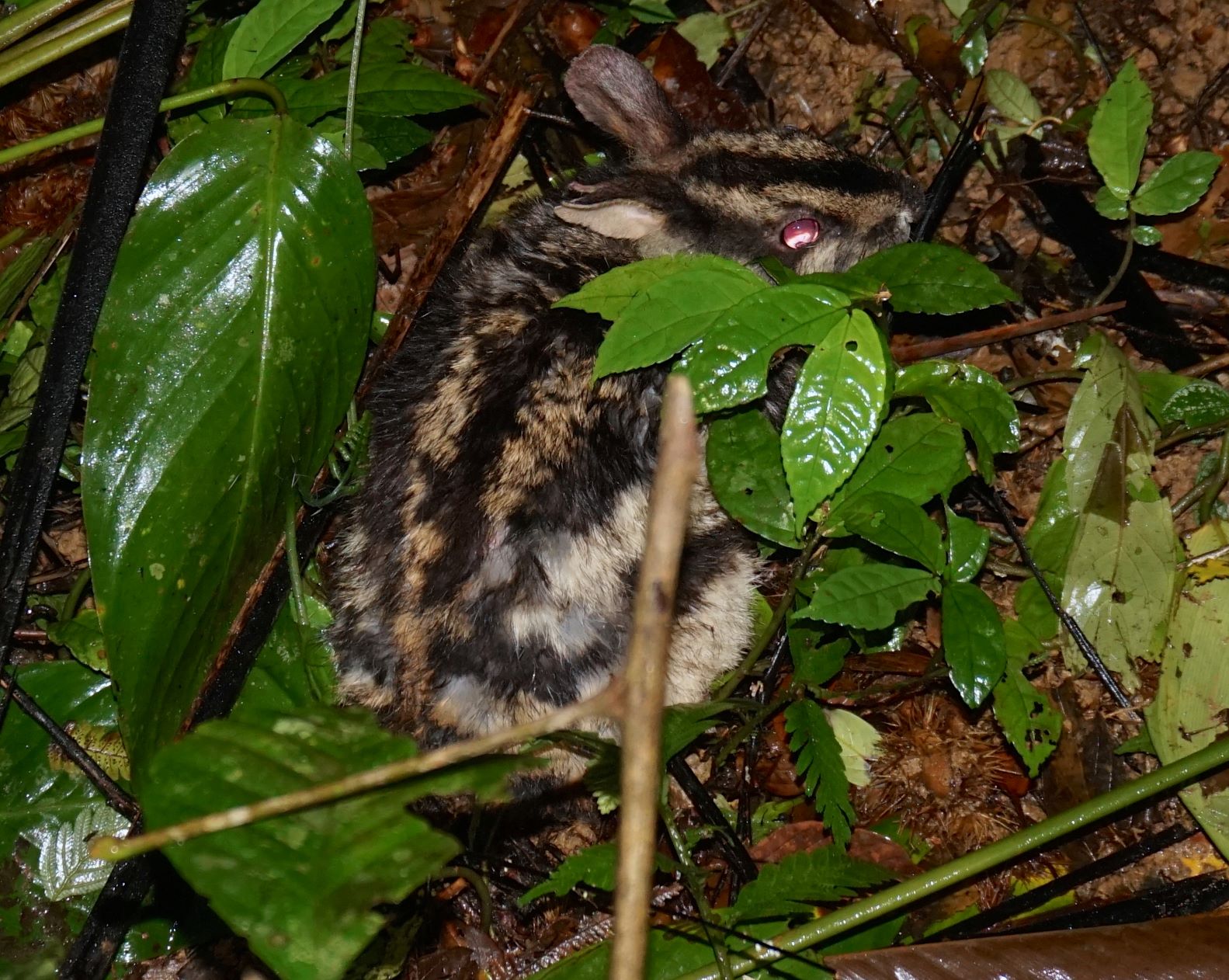
Since its remarkable scientific debut in the mid 1990s, interviews with local villagers, opportunistic camera trapping, and the occasional market specimen have provided some information on the species. The Annamite striped rabbit is found only in wet evergreen forest. Because the majority of the wet evergreen forest is restricted to the seaward-facing eastern slopes of the Annamites chain, most of its range is in Vietnam. It occurs from the northern to central Annamites, although its distribution within this area appears to be highly fragmented as a result of both micro-climatic and anthropogenic factors .
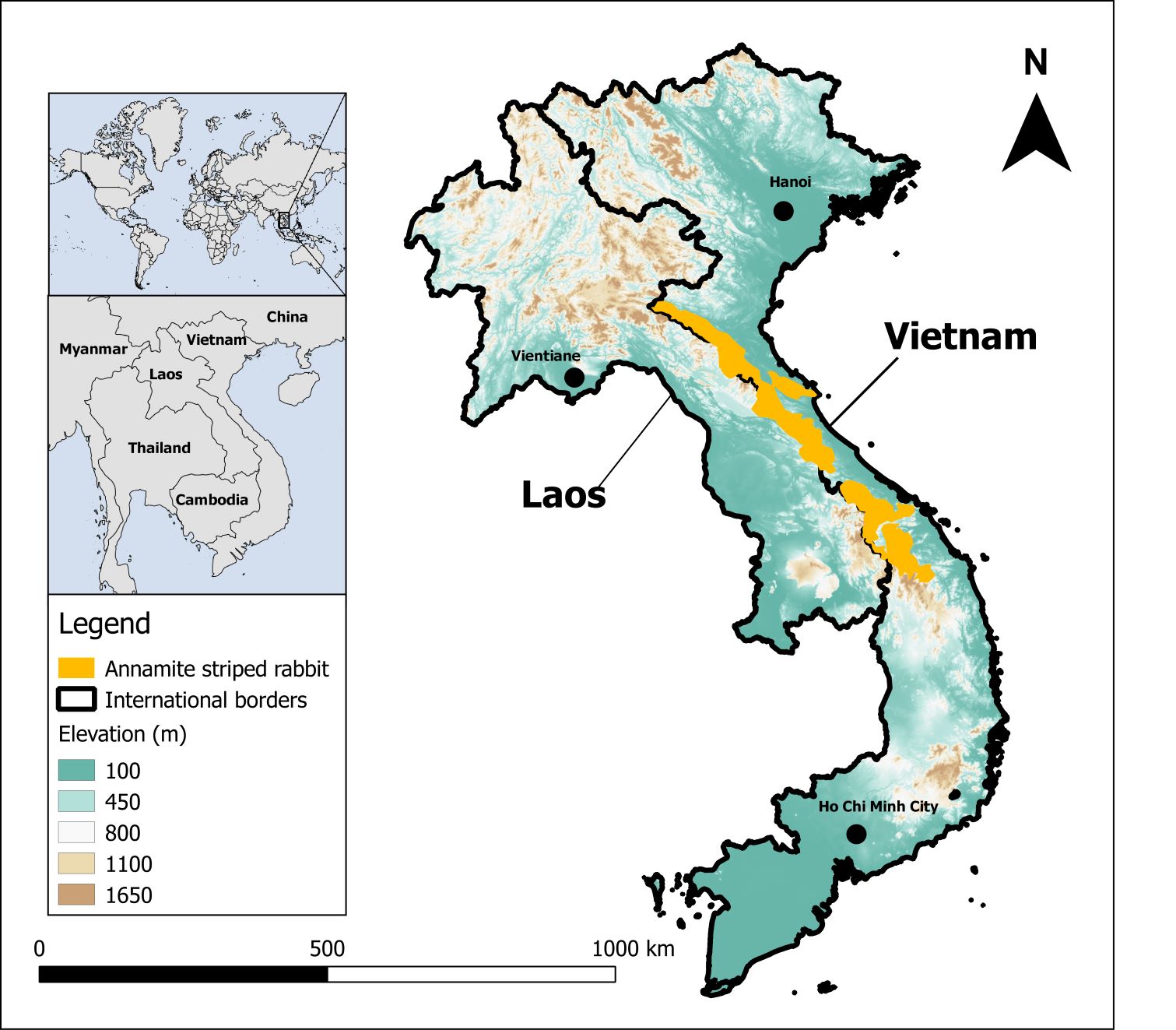
What else do we know beyond these general facts? Surprisingly little. Since its scientific discovery, no studies have focused on the species, and the Annamite striped rabbit remains something of a lagomorph black hole. This lack of information is particularly concerning from a conservation perspective, because the Annamites experiences one of the highest levels of poaching of any tropical region.
Empty forest syndrome
Poaching casts a dark shadow over the incredible biodiversity of the Annamites. Poaching in Vietnam and Laos is primarily accomplished by the setting of wire snares . Snares are cheap and easy to set. All you need is wire cable – which can be picked up in any corner store for pennies – a long flexible stick, and a makeshift trigger mechanism. Attach the wire, set the trigger, bend the rod, and you’re done. Any animal that steps onto the trigger will set off the trap and – snap! – the wire noose tightens and the pole springs upright. There is one less wild pig or civet or Annamite striped rabbit in the world.
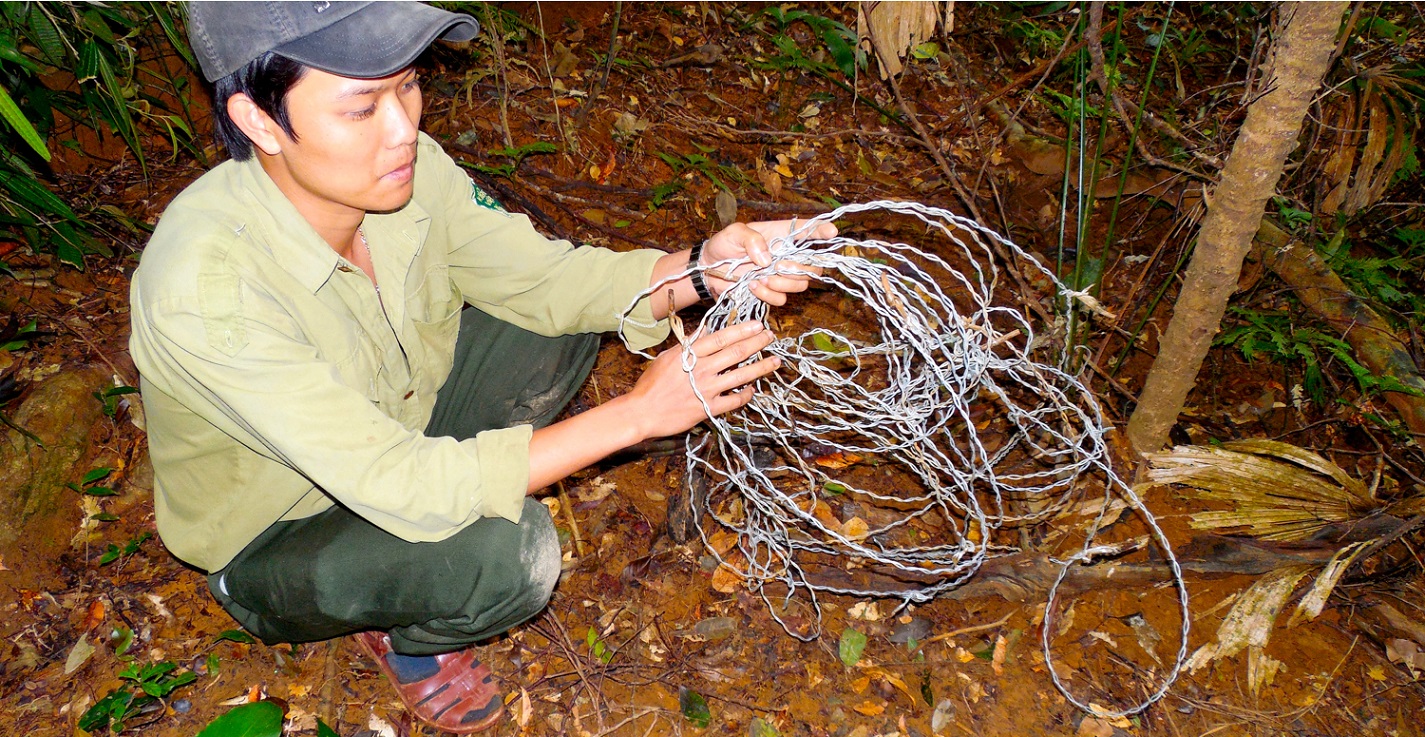
The magnitude of poaching in the Annamites is difficult to comprehend. Snares blanket the forests, and in many protected areas it is possible to find dozens – sometimes hundreds – of snares in a single day. Between 2011 and 2015, for example, Forest Guards in the Hue and Quang Nam Saola Nature Reserves in central Vietnam removed more than 75,000 snares – though this is probably a small fraction of the total snares in the forest. When one considers that the Saola Nature Reserves are one of the few places in the region with dedicated snare-removal teams, the sheer number of snares littering the Annamites becomes apparent.
This level of snaring has decimated ground-dwelling mammal and bird species, causing what biologist Kent Redford termed “empty forest syndrome”: habitat that is structurally intact but devoid of larger terrestrial mammals and birds . Several charismatic species have already been extirpated from the Annamites: tiger, rhinos, and leopard are now ghosts of the past. A few Annamite endemics, including the near-mythical saola, are now facing imminent extinction. This depressing state of affairs begs the question: How is the Annamite striped rabbit faring under such intensive poaching pressure? Until recently, scientists had little information on the species status. We needed data to find out.
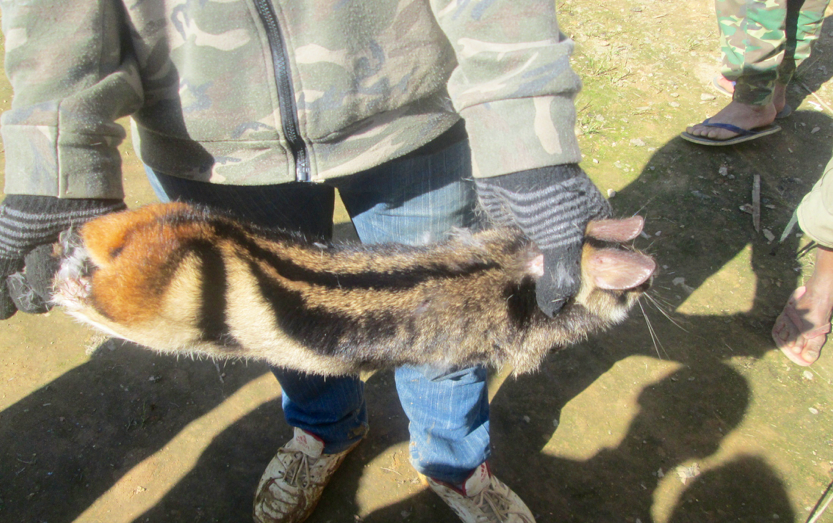
First glimpse into the secretive world of the striped rabbit
From 2014 to 2016, the Leibniz Institute for Zoo and Wildlife Research, in collaboration with WWF and local government counterparts, conducted extensive surveys in the central Annamites. One of our objectives was to assess the ecology, distribution, and conservation status of little-known endemic species like the striped rabbit. We set camera traps across five areas: three protected areas in Vietnam, and one protected area and an adjacent unprotected forest in Laos. Our work resulted in hundreds of Annamite striped rabbit photos – the largest dataset on the species ever collected – and provides the first glimpse into the world of this newly-discovered and secretive species.
We found that the Annamite striped rabbit is nocturnal and solitary . Taken together, this cryptic behavior could explain, in part, why the species was able to stay hidden from science for so long, and has even today been sighted by only a handful of biologists. Although we recorded the Annamite striped rabbit in each of the five areas we surveyed, it was not common anywhere, and in one of our sites it was exceptionally rare, verging on local extinction. Because habitat was similar in all of the study sites, differences in striped rabbit occurrence are almost certainly related to anthropogenic, rather than environmental, influences.
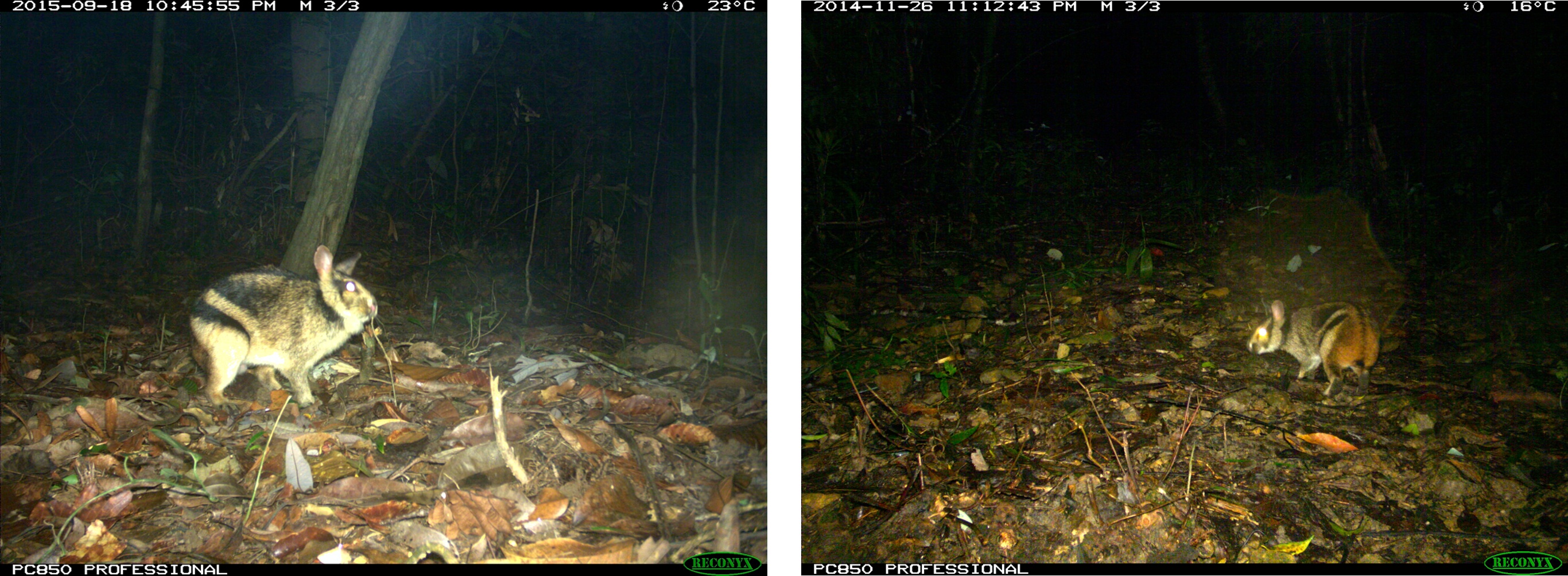
What do we make of this information? It seems obvious that Annamite striped populations have declined significantly from historic levels in these sites. That in itself isn’t surprising, since all ground-dwelling species in the Annamites have been hit hard by snaring, but the overall rarity of the striped rabbit is nonetheless cause for concern. The most jarring finding from our surveys was the fact that the striped rabbit is almost gone in our first survey site – another victim of relentless snaring. To me, the situation in this particular protected area represents a small part of a larger pattern that is playing out across the Annamites: Industrial-level snaring is causing local populations to blink out one by one, and this process is cumulatively driving species into total extinction.
But all is not doom and gloom. There were some optimistic findings. The striped rabbit was still frequently detected in two of the protected areas that we surveyed. Notably, these areas have had active snare-removal teams operational for the past six years – one of the few places in all of Vietnam to have on-the-ground anti-poaching efforts – and it is possible that striped rabbit populations have rebounded in these areas because of this work. Overall, the fact that the striped rabbit still occurs at all in such heavily-snared protected areas is a hopeful sign. It is certainly more robust to intensive snaring pressure than other Annamite endemics such as the saola. With continued snare-removal efforts, there is no doubt that striped rabbit populations could rebound in these areas.
Future prospects
How do we keep the Annamite striped rabbit from following other species in the Annamites into extinction? It won’t be an easy task – but with the right people, adequate funding, and political will within the range states, it can be done. Ultimately, to protect the striped rabbit and other endemic species, we must stop the snaring crisis within the forests of the Annamites. There is no one-size-fits-all solution. We need to be working on multiple fronts simultaneously.
First, we need to strengthen protected area management so that people poaching wildlife inside protected areas will face consequences. At present, people caught poaching are almost always given a verbal warning and told to exit the reserve. Of course, they seldom leave, and if they do they’re back the next day. There are simply no consequences for snaring in most Annamites forests. This must change.
Second, and related to the first, governments need to pass legislation that make it illegal for a person to have snares in their possession within a protected area. Right now, there is little that forest rangers can do if they catch people with snaring wire inside a national park. It is critical that this legal loophole is closed. Wire needs to be treated with the same level of severity as possession of a gun or chainsaw.
Third, we need to increase snare removal efforts in areas where striped rabbits are known to occur. Strengthening protected area management and changing legislation are high priorities – but they will take time. And time, unfortunately, is something that the Annamite striped rabbit does not have. There are now 75,000 fewer snares in the Hue and Quang Nam Saola Nature Reserves as a result of intensive collection efforts by WWF and local government counterparts. That is 75,000 fewer traps for striped rabbits. We need this level of effort across Annamite striped rabbit range.
Fourth, we need to monitor rabbit populations in a rigorous and scientific way. For many years, biological surveys in the Annamites were (and still are) done by subjective "expert assessments"’ To determine if conservation interventions are resulting in population recoveries, we need robust population monitoring. Rigorous monitoring will also allow us to determine if, in a worst-case scenario, the global Annamite striped rabbit population takes a critical turn downward. In such a situation conservation scientists would need to consider establishing a conservation breeding population (as is currently being done for the saola).
Finally, we need the political will to enact real changes on the ground in Vietnam and Laos. Unless higher-level government officials care about snaring and the plight of threatened Annamites species, it will be difficult to see change at the lower levels of protected area management.
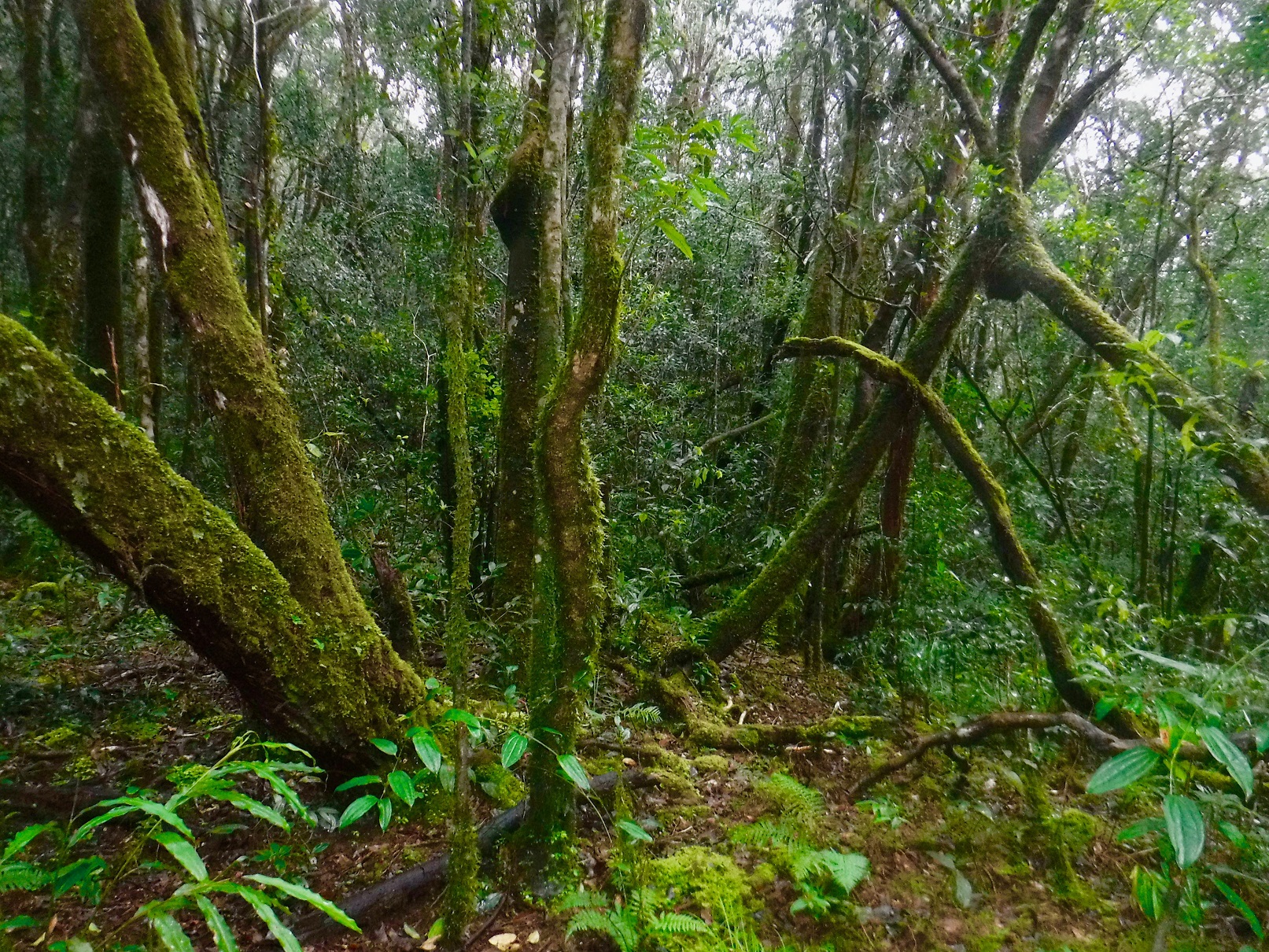
Can we save the Annamite striped rabbit from extinction? Yes. Like the fight to save any endangered species, the odds are long and the challenges immense – but it can be done. And I would say it has to be done. At the heart of the striped rabbit’s story is one fundamental question: How can we let one of the most remarkable mammals on the planet go extinct a mere twenty-five years after its discovery?
Further reading on this topic:
- Tilker A, Nguyen A, Abrams J, Bhagwat T, Le M, Van Nguyen T, Nguyen AT, Niedballa J, Sollmann R, and Wilting A (2018) A little-known endemic caught in the South-east Asian extinction crisis: the Annamite striped rabbit Nesolagus timminsi Oryx 1-10. doi:10.1017/S0030605318000534
- Gray TNE, Hughes AC, Laurance WF, Long B, Lynam AJ, O’Kelly H, Ripple WJ, Teak Seng, Scotson l, and Wilkinson NM (2018) The wildlife snaring crisis: an insidious and pervasive threat to biodiversity in Southeast Asia Biodiversity and Conservation 27: 1031-1037
- “Nesolagus timminsi Annamite Striped Rabbit” in Lagomorphs: Pikas, Rabbits, and Hares of the World (2017) Eds. Smith AT, Johnston CH, Alves PC, and Hackländer K John Hopkins University Press, p 97-99
- Sterling EJ, Hurley MM, and Le M (2008) Vietnam: A Natural History Yale University Press
Responses